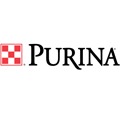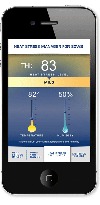 This free tool provides heat stress prevention tips and resources to producers, helping them to avoid seasonal production lulls.
This free tool provides heat stress prevention tips and resources to producers, helping them to avoid seasonal production lulls.
“Sows can become heat stressed at temperatures lower than producers may think,” says Vern Pearson, PhD, swine nutritionist for Purina Animal Nutrition. “Producers need to look at both the temperature and the humidity inside the facility to determine the potential for heat stress.”

The Heat Stress Manager for Sows app features an easy to use heat stress calculator for inputting the current temperature and humidity readings. It is recommended that producers install a thermometer and hygrometer in the sow barn to read these temperatures at the location of the sows. After inputting these readings into the app, the temperature and humidity are translated into a THI reading that shows the severity of heat stress, ranging from mild to extreme risk, as shown in Figure 1. Research shows that sows can begin to feel the impact of heat stress at a THI of 80. [1]
“Sows that are heat stressed have a greater potential to experience seasonal infertility, smaller litter sizes, decreased embryo survival rates and death losses,”[2] Pearson says. “But the most common impact of heat stress is decreased feed intake; therefore, ration changes that promote feed intake may be needed as THI levels increase.”
This app helps producers make educated ration and management changes based on the environment in the facility.
In addition to the heat stress calculator, the mobile app offers management and nutrition tips to mitigate heat stress.
The Heat Stress Manager for Sows mobile app is available to download for Android phones at: http://bit.ly/AndroidSowManager and for iPhones at: http://bit.ly/iPhoneSowManager.
[1] Whitney, Mark. “Minimizing heat stress in pigs during the summer.” University of Minnesota Extension. http://www.extension.umn.edu/swine/components/pubs/Whitney-MinimizingHeatStress.pdf. 5 May 2013.
[2] Rozeboom, K.J., M. Todd See and W. Flowers. “Management practices to reduce the impact of seasonal infertility on sow herd productivity.” North Carolina Cooperative Extension Service. Publication No. ANS00-8138. http://www.ncsu.edu/project/swine_extension/publications/factsheets/813s.htm. 5 May 2013.
June 27, 2013 - Purina


